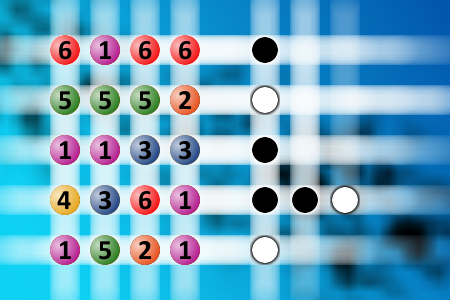Which is a winning combination of digits?
The computer chose a secret code (sequence of 4 digits from 1 to 6). Your goal is to find that code. Black circles indicate the number of hits on the right spot. White circles indicate the number of hits on the wrong spot.
Seeing Eye Dog
A blind man is walking down the street with his seeing-eye dog. They come to a busy intersection and the dog, ignoring the high volume of traffic zooming by on the street, leads the blind man right out into thethick of the traffic. This is followed by the screech of tires and horns blaring as panicked drivers try desperately not to run the pair down.
The blind man and the dog finally reach the safety of the sidewalk on other side of the street and the blind man pulls a cookie out of his coat pocket which he offers to the dog.
A passerby, having observed the near fatal incident, can't control his amazement and says to the blind man, "Why on earth are you rewarding your dog with a cookie? He nearly got you killed!"
The blind man turns partially in his direction and replies, "To find out where his head is, so I can kick his ass."

